Fall for me brings the beginning of the new gardening year, and October is fall’s most festive month. Shorter days and cooler temperatures mean bringing in plants for a changing season. I’m not sure what excites me more: the foliage color change or the additional light from fewer leaves on the trees.
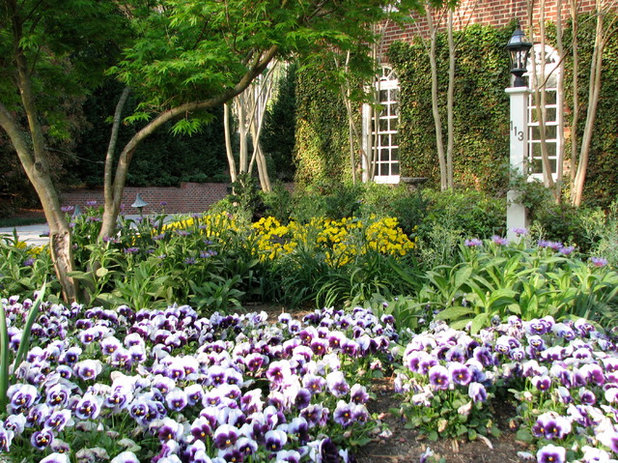
Gardening with Confidence®
Plant annuals. Kale, cabbages, mustards, pansies, snapdragons and violas are annuals that are colorful, long lasting and inexpensive; I’ve often wondered why they’re so underused.
Purchase pansies and violas when the selection is best, as early as September, but wait until late October to plant them. Early October can still be too hot to plant, but don’t wait until then to buy, or the selection will be too scarce. Nurse the plants in a holding area if you have to to ensure you get your top choice.
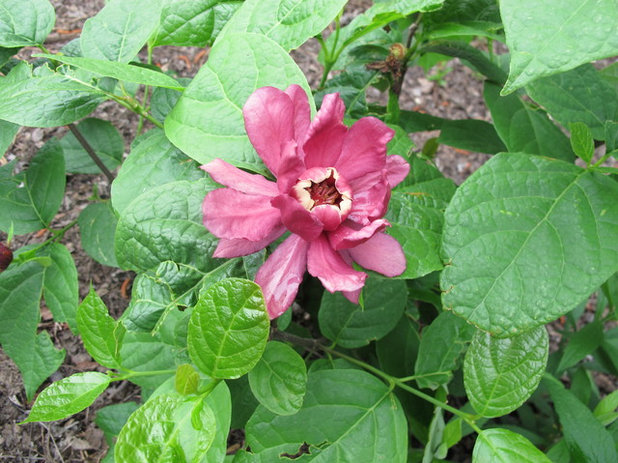
Gardening with Confidence®
Transplant trees and shrubs. Have you been waiting to rearrange a few trees and shrubs? Now, with the cooling temperatures, is a good time to begin the process.
it’s best to root prune this month and transplant 30 days (or more) later. This allows woody ornamentals a chance to recuperate before being transported to their new location. Root pruning stimulates small feeder roots near the trunk. These new roots will be dug as part of the transplant, allowing the tree or shrub to better adapt.
- Water the soil well the day before root pruning.
- Prune out from the trunk a 10- to 12-inch-diameter root ball for every inch of trunk diameter. Thus, a 2-inch-diameter trunk will be root pruned about 2 feet from the trunk.
- Using a flat spade, begin cutting a trench about 24 inches deep. If you run into large roots, cut with loppers.
- Continue cutting a circular trench around the tree trunk and water thoroughly.
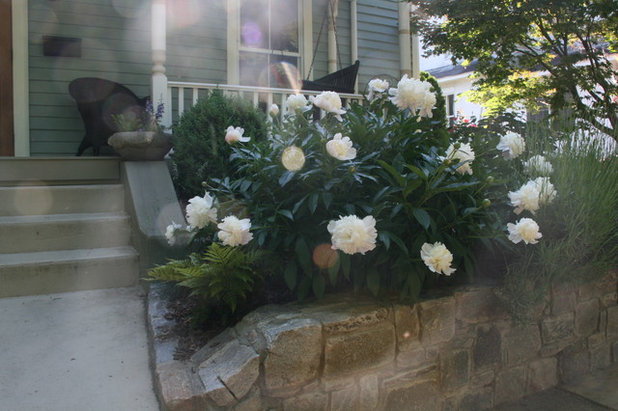
Gardening with Confidence®
Divide peonies. If your herbaceous peony has become too big for its current location, or if you just want to move or share it, it can be divided after the first frost.

Period Homes, Inc.
Prepare your houseplants for winter. Many of us like to give our indoor houseplants a summer vacation outside, but the summer break is about to end. It’s time to bring those plants back inside.
During the summer you might have found that your plants grew a lot, and errant branches are in need of a little pruning. Herbaceous plants can simply be pinched back, but use clippers on woody stems. Be sure to remove any stems or leaves that are dead or diseased.
Repot plants whose roots are growing out of the drainage holes or are at the soil’s surface. Select a container that is only one size larger than the old one; otherwise top growth may be retarded while the roots try to fill up the extra space.
Clean the leaves of dust and dirt that gathered during the summer. This covering can interfere with a plant’s ability to turn light into food. A gentle spray from the garden hose and a light wipe with a sponge are usually adequate.
A light application of insecticidal soap is a wise precaution before bringing your plants back inside, even if you haven’t seen evidence of pests. Spider mites and other pests thrive in a dry, heated house and will multiply rapidly, if present.
Once they're inside, locate your plants where they will receive as much natural light as possible. When you water them, do so thoroughly but less often in winter than you did in the summer.
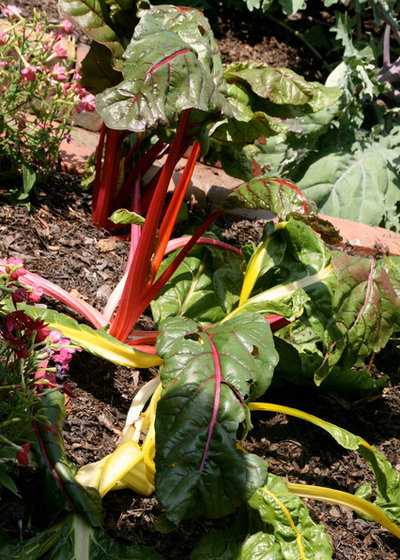
Gardening with Confidence®
Plant cool-season vegetables. The cooler fall temperatures bring cool-season crops. It’s time to plant or seed spinach and collards. Also, cilantro and lettuce will once again thrive in your garden.
Consider trying some new varieties this year, or vary your usual choices. Why not add some red-leaf lettuce? Loose-leaf red lettuce packs a high nutritional value, including being an excellent source of beta-carotene.
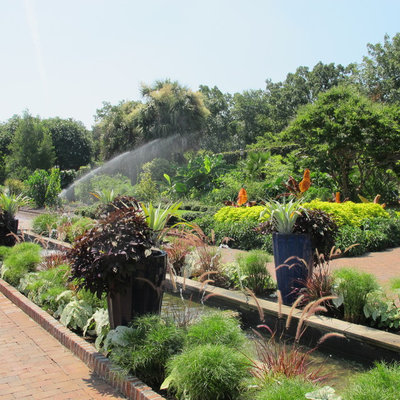
Gardening with Confidence®
Water in well before winter. If October and November are dry, give perennials a deep final soaking so they go dormant in good conditions. They’ll be less subject to being killed in winter with a drink before they sleep.
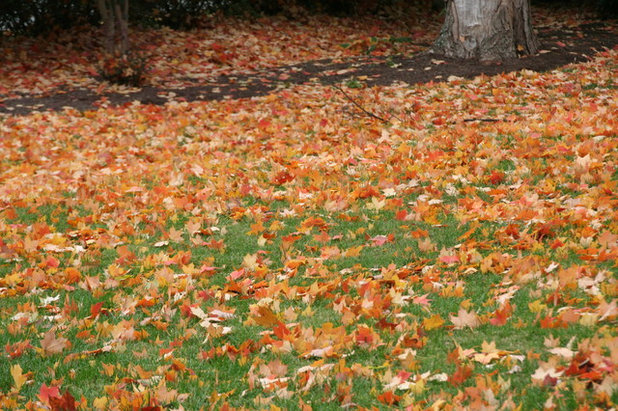
Gardening with Confidence®
Compost those leaves. Use a mower equipped with a mulching blade to chop fallen leaves on the grass. These leaves make a wonderful addition to garden beds or the compost pile.
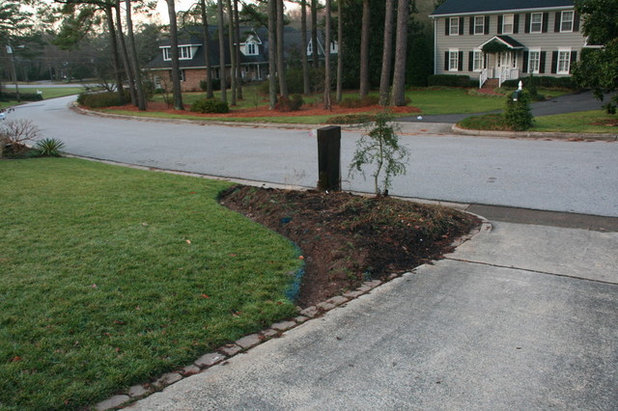
Gardening with Confidence®
Prepare beds. It’s also a great time to prepare garden beds for next year.
- Mark new beds (or the beds you want to extend) with marking paint or a hose.
- Cut an edge, turning this dirt into the new bed, and cover with 8 to 10 layers of newspaper.
- Cover with about 4 inches of chopped leaves or composted leaf mulch.
Now sit back and let nature take her course. Your bed will be ready for planting in the spring.
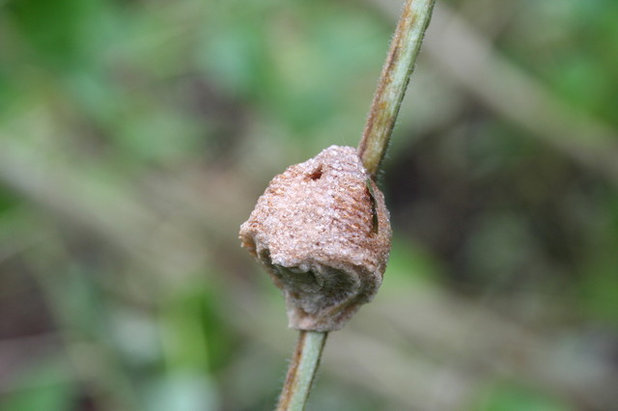
Gardening with Confidence®
Appreciate wildlife. Don’t be so quick to tidy up. The remains of the summer and fall garden give shelter, food and cover for wildlife, while also adding winter interest to garden beds.
Pictured here is a praying mantis egg case I found one year while cutting back my garden. It was at this point I learned to slow down my fall pruning until the spring, when the leaves were cleared away and overwintering wildlife was easier to see.
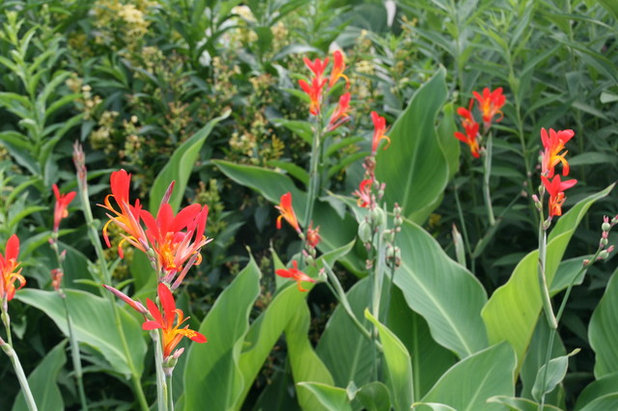
Gardening with Confidence®
Watch out for canna leaf roller. Cannas are great accent plants and attract hummingbirds to the garden. Plus, most canna cultivars are hardy in the Southeast and can overwinter in the ground. If you found your canna foliage riddled with holes, you probably have leaf roller. Canna leaf rollers are major pests in the Southeast, causing the beautiful foliage to be unsightly.
After the first frost, cut the foliage to the ground and remove it from the garden. Removing the foliage helps control overwintering pests. Don’t compost, as the pest may overwinter.
More guides to Southeast gardening | Find your U.S. garden checklist





